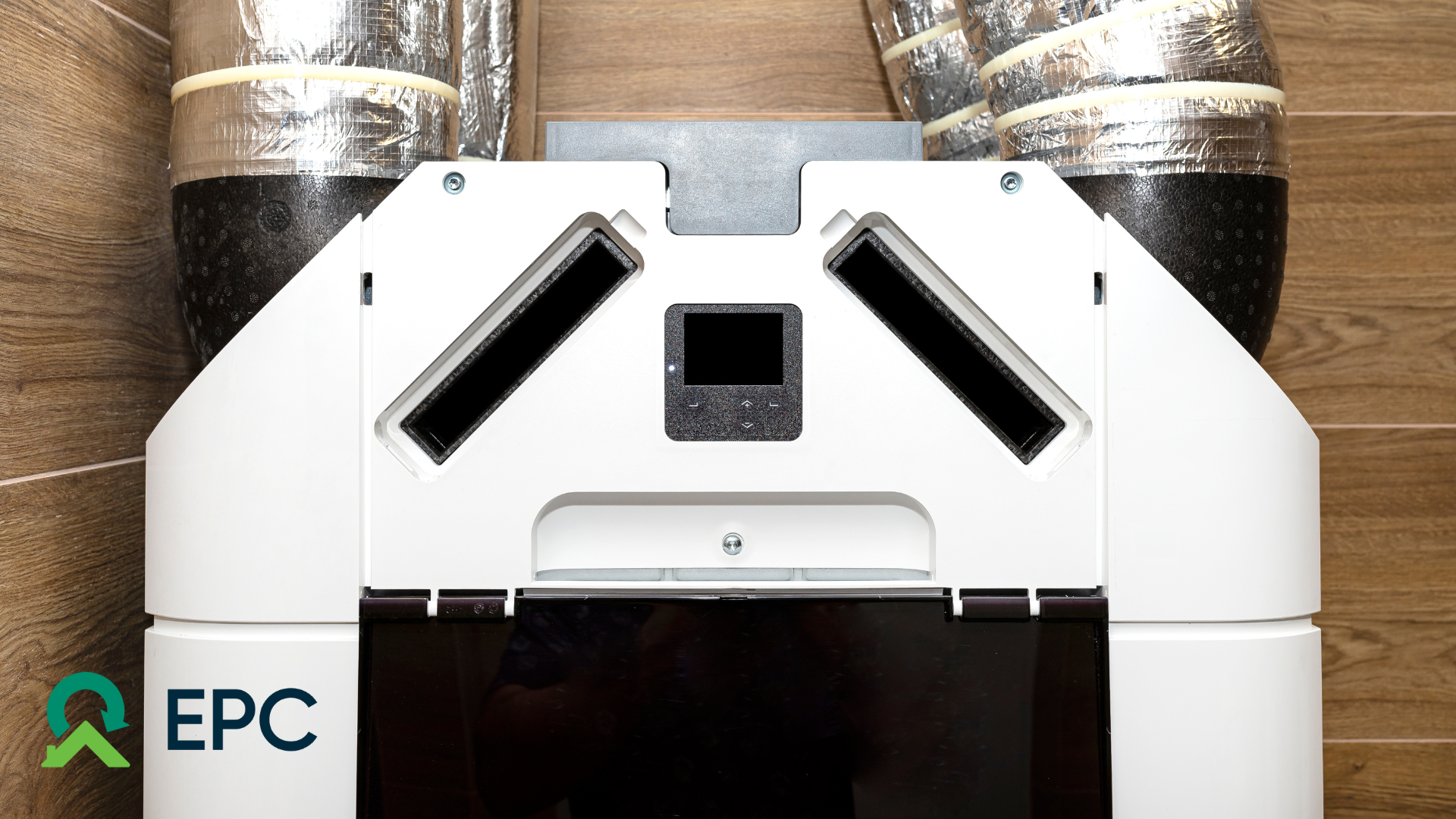:quality(75))
Mechanical Ventilation with Heat Recovery (MVHR) systems are experiencing a boom in popularity. with Homeowners across Essex are enjoying the many benefits they have to offer. Not only do they vastly improve air quality by filtering out stale air and allergens, they also help to warm up your home. This improves your efficiency, leading to substantial savings on your energy bills.
In this article, we'll run you through the MVHR installation process, guiding you through what you can expect.
MVHR Installation: Step-by-Step Guide
Installing an MVHR system in an existing home isn't a simple job. It requires extensive planning, ductwork installation, and system design. However, with the right MVHR installers in place, the process will be methodical and efficient. First the installer will find a suitable placement location for the MVHR unit.
1. Finding a Location
An MVHR system will usually be installed in a utility room or a large cupboard space. The unit will have at least one metre of space in front of it, which allows for unobstructed maintenance access.
The installer will determine the right part of your property to install the unit. They will consider the placement of the ducting, the airflow of each room, potential valve placements. They will also calculate the number of so-called 'wet rooms', which include the kitchen and bathrooms.
From here, the installer will be able to select the right MVHR unit and ducting system. They will make sure it suits your property's energy efficiency, performance, and layout.
2. Preparing the Location
When the location has been decided, it will need to be prepared for installation. This involves cleaning it thoroughly, making sure it's completely dry, and removing any obstacles in the way. The conditions should be appropriate for electrical and condensate drainage connections.
The temperature in the area you've chosen to install the MVHR unit should always be above freezing. If the location gets any colder than 0-degrees, the unit won't be able to function properly.
3. Fixing the MVHR Unit
The unit will be mounted and fixed to the wall using specially-made wall mounts. To eliminate vibrations and encourage optimal performance, the installer will fix the unit to a solid wall. If you don't have an adequate solid wall, the installer will use a stud partition.
Once again, the unit must have space around it for maintenance, and shouldn't be in an area vulnerable to frost.
4. MVHR Ducting Installation
Ducting is the name for the pipework within the MVHR system that distributes filtered air around your home and extracts stale air. MVHR installations use two different types of ducting. These are:
Leg and branch (rigid): One main pipe with branches extending out of it
Radial (semi-rigid): Individual ducts that run from a manifold into each room
The installer will plan the ducting layout carefully. They will do this before cutting holes in the ceilings and walls. The installation team will then run the ducts through the desired route and strap them in tightly. They will connect to distribution manifolds, which will connect to the MVHR unit.
The installer will seal all ducting joints with a silicone sealant for air tightness. Ducts in colder areas, like loft spaces, need insulation. This helps stop heat loss and keeps them working well.
5. MVHR Grille Installation
The installer will place two types of ventilation grilles throughout your home. First, you've got the supply grille, which is responsible for releasing fresh, filtered air into living areas and bedrooms.
Then, there are extraction grilles, which remove stale air from wet rooms, such as kitchens, bathrooms, and utility rooms.
The ducting connects to the grilles via a plenum box. This creates an airtight attachment interface.
6. Connecting and Balancing the MVHR Unit
You need to connect the MVHR unit to your home's power supply in order for it to function. Before you switch the system on, it will need balancing. This is when the installer will set and balance the airflow rates to create the required ventilation levels in each room of the house.
The installer will then complete a thorough inspection of the work to make sure everything is good to go. They will optimise the user control settings to ensure maximum performance and efficiency from the unit.
The installer will also have to test the MVHR unit's sensors. An MVHR unit has sensors that adjust how it works based on outside temperatures. This keeps your home comfortable throughout the year.
What Your MVHR System Offers

Your MVHR system will transform your home, filtering out allergens and providing you with continuous clean air flow. The system uses a heat exchanger to recover heat. It takes warmth from the air and moves it to living areas. This will provide you with comfortable living temperatures, lowering your central heating usage.
The high levels of energy saving that an MVHR unit offers will lower your energy bills and your carbon footprint. Plus, as it will extract air from outside, it is a form of renewable energy.
Installing renewable energy appliances in your home is a major step towards a cleaner, greener future. Reducing your reliance on the grid with MVHR, heat pumps, and solar panels, can save hundreds of pounds a year on your energy bills.
EPC | MVHR Installation Essex
With 15+ years of experience, EPC is Essex's trusted MVHR installer
EPC makes tough jobs simple, thanks to our MCS certified experts. We will design a bespoke MVHR system for your home adhering to its exact needs. We never use pushy sales tactics, instead working around your budget to provide the perfect solution for you.
Our installations are carried out safely and efficiently, ensuring minimum disruption to your daily life.
Get in touch with us today to see how we can help you improve the air in your home and slash your energy bills.